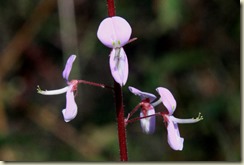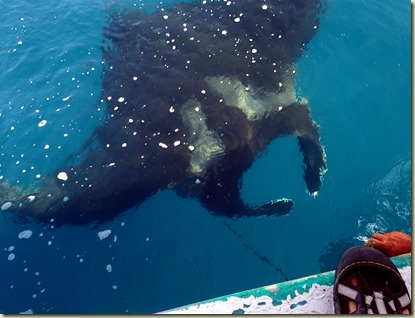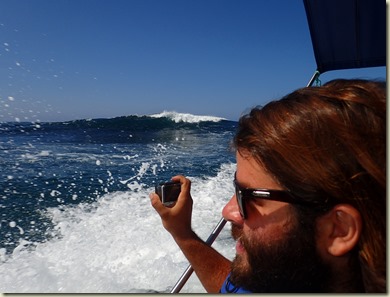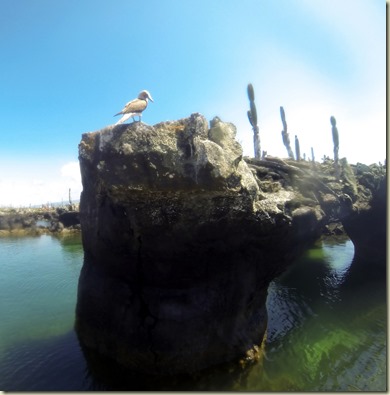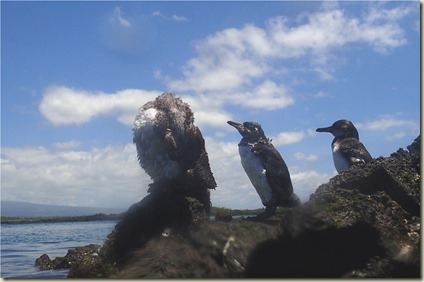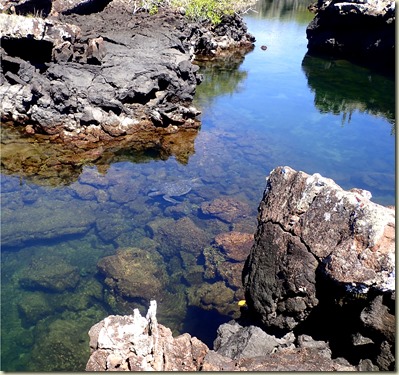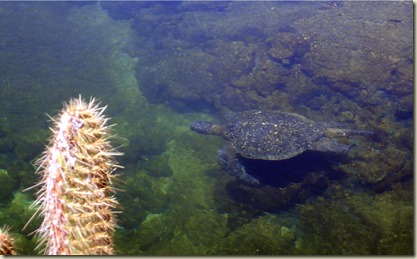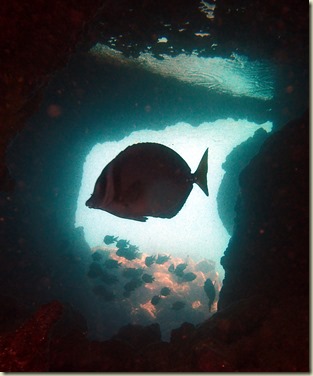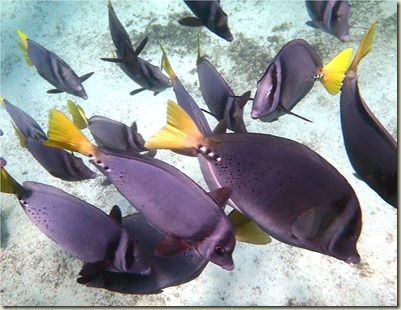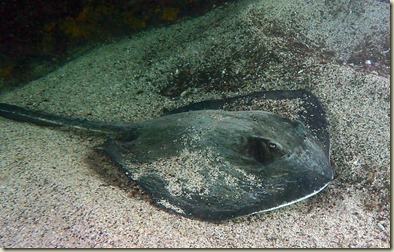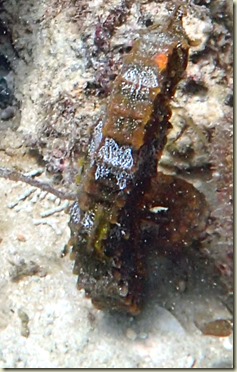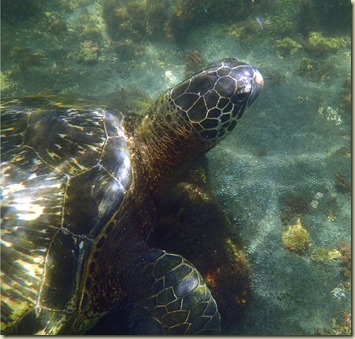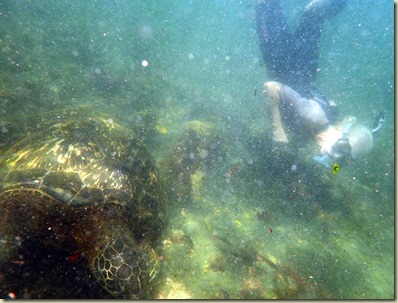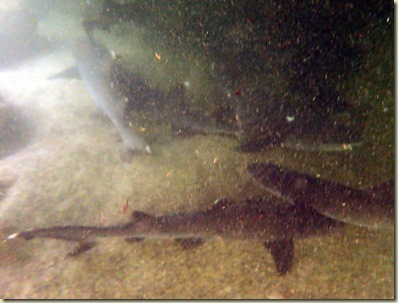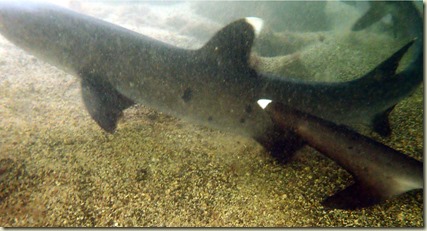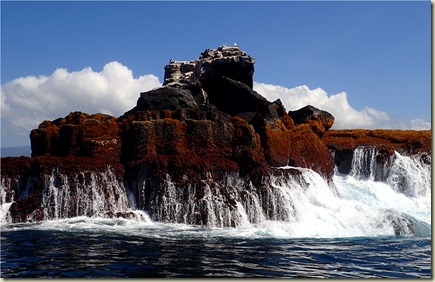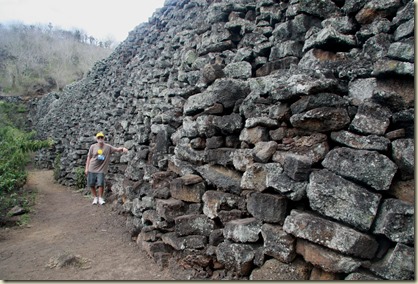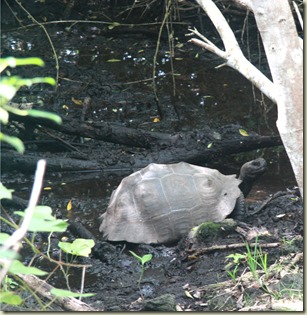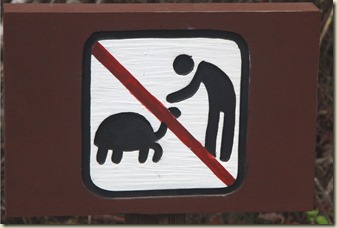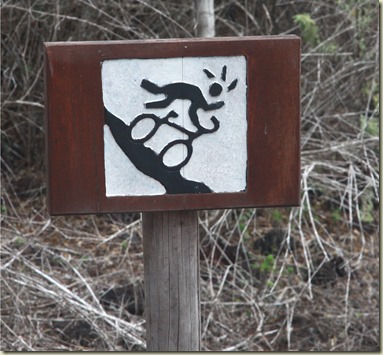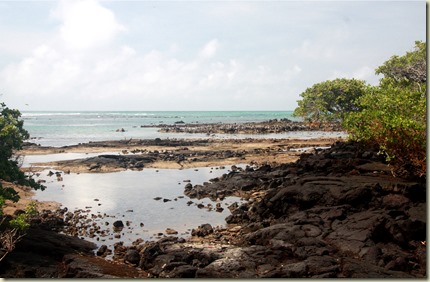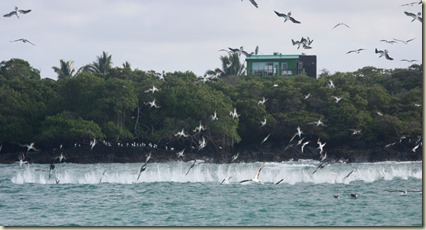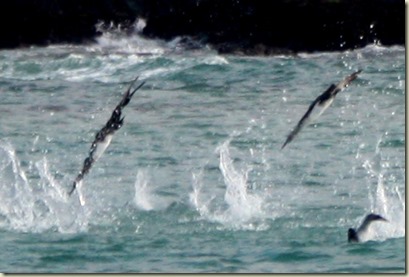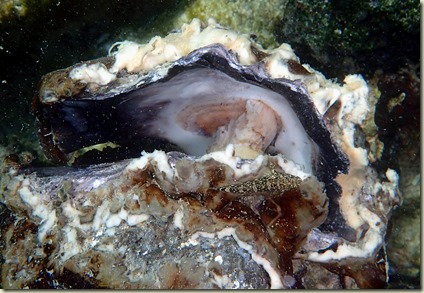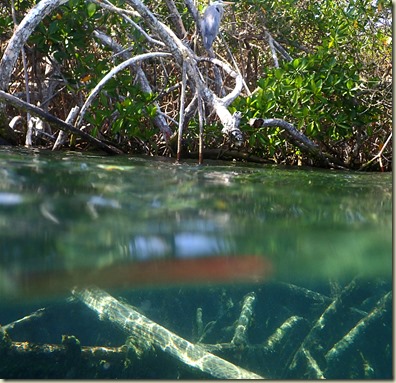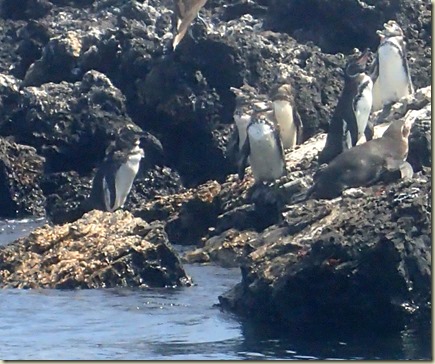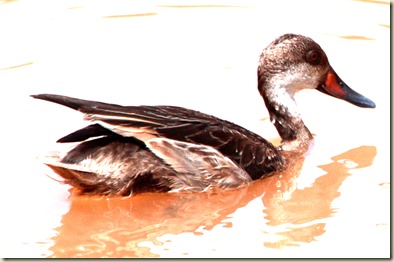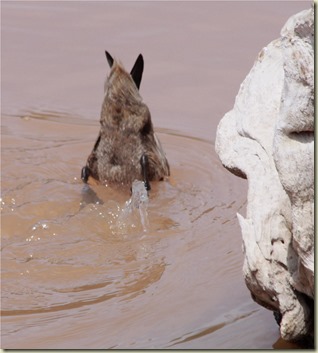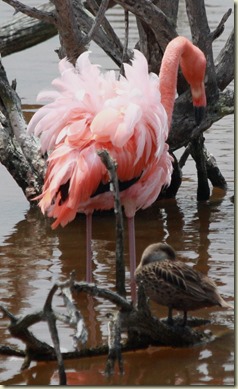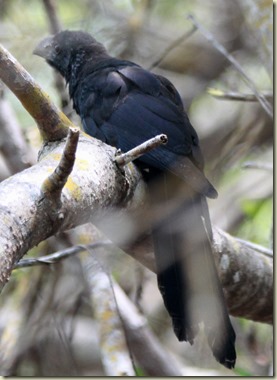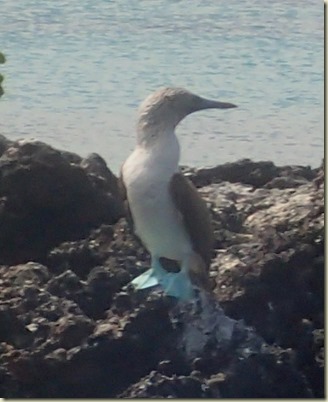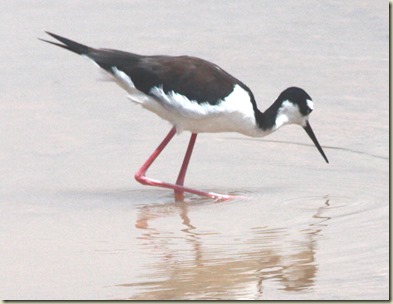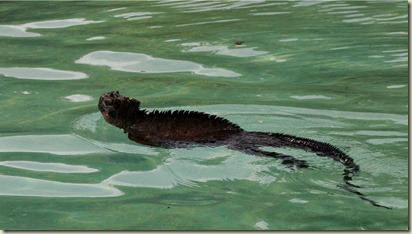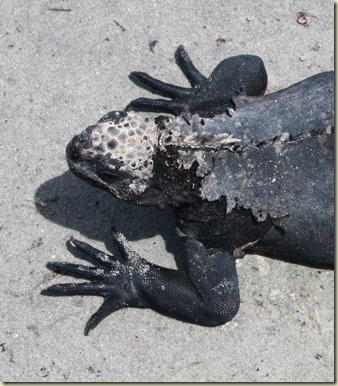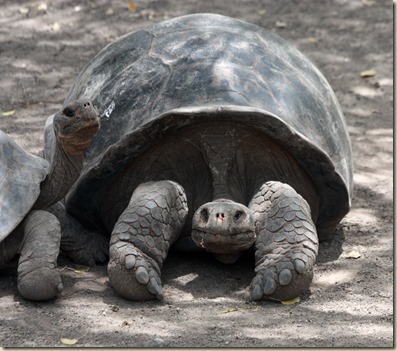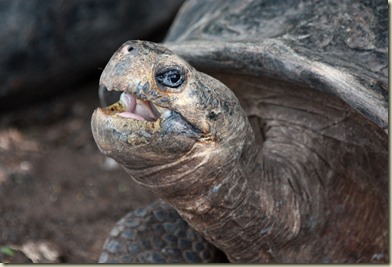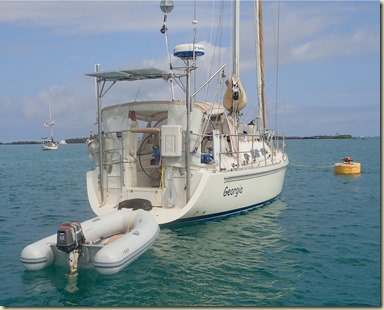
I know it is bad blogger form to start out with a spoiler alert and give away the finale, but here’s the Vermillion Flycatcher that are trusty guide spotted on the way back from hiking Volcano Sierra Negro. Chris asked the guide if we might see any along the trail. He told us that we had to descend to about 700-800 meters and stick close to him. He sent the rest of the tour group on down the trail and took Chris and I off the beaten path over to a fence along a guava orchard. After 100 yards or so, he spotted this beauty hanging out on a close by branch. For those that are not that wordy, vermillion is a shade of red, kind of like taupe.
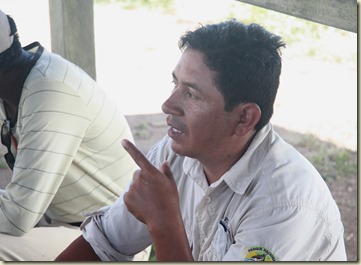 Our national park guide Julio reviewing our basic geology lessons on volcanoes. However, his main job was to make sure he came out of the mountain with the same number of folks he went in with.
Our national park guide Julio reviewing our basic geology lessons on volcanoes. However, his main job was to make sure he came out of the mountain with the same number of folks he went in with. In the spirit of doing the blog out of order. This is the taxi that picked us up near the dinghy dock. We thought it was taking us into town so we would board the mini-bus heading to the mountain. But he took off for the Volcano, with Chris in the front, two ladies from Guayaquil in the back seat and me and a local sitting in the pickup bed. I spent most of the bouncy 40 minute trip up the mountain looking for my seatbelt.
In the spirit of doing the blog out of order. This is the taxi that picked us up near the dinghy dock. We thought it was taking us into town so we would board the mini-bus heading to the mountain. But he took off for the Volcano, with Chris in the front, two ladies from Guayaquil in the back seat and me and a local sitting in the pickup bed. I spent most of the bouncy 40 minute trip up the mountain looking for my seatbelt.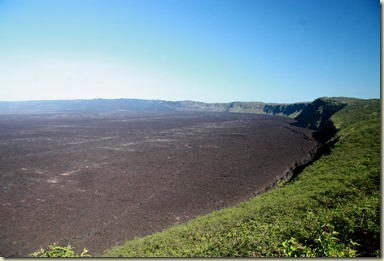 The volcano's caldera is the second largest caldera in the world. I’ll leave it to someone with much better Internet bandwidth than we have to ask Google what is the largest one. You can’t see it well in this picture, but the upper 1/3 of the Caldera in the background is covered in green growth. The nearer part is rugged lava flow. The whole caldera was green till the 2005 eruption.
The volcano's caldera is the second largest caldera in the world. I’ll leave it to someone with much better Internet bandwidth than we have to ask Google what is the largest one. You can’t see it well in this picture, but the upper 1/3 of the Caldera in the background is covered in green growth. The nearer part is rugged lava flow. The whole caldera was green till the 2005 eruption. 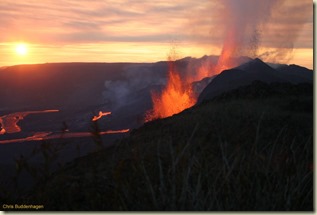 The eruption put ash 25,000 ft in the air. It must have been a more interesting hike back then. (Picture from panarimio.com)
The eruption put ash 25,000 ft in the air. It must have been a more interesting hike back then. (Picture from panarimio.com) 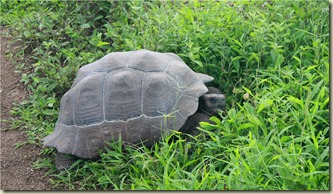 After we made the peak of the caldera rim, we started hiking down the north side of the volcano. This Sierra Negro tortoise was lounging on the side of trail where the grasses were still growing -
After we made the peak of the caldera rim, we started hiking down the north side of the volcano. This Sierra Negro tortoise was lounging on the side of trail where the grasses were still growing -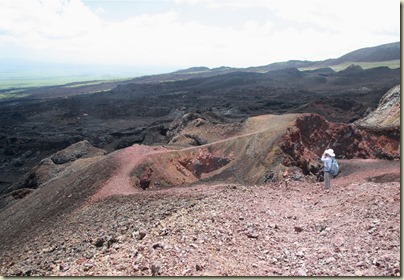
This is Chris checking the view of the badlands on the north side where much of the last eruptions have flowed. It is also the drier side of the mountain.
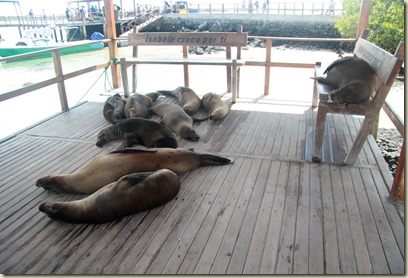 This was the scene at the dinghy dock when we back mid-afternoon. It was apparently a tough morning fish hunt for the sea lions, siesta time.
This was the scene at the dinghy dock when we back mid-afternoon. It was apparently a tough morning fish hunt for the sea lions, siesta time.Paul
